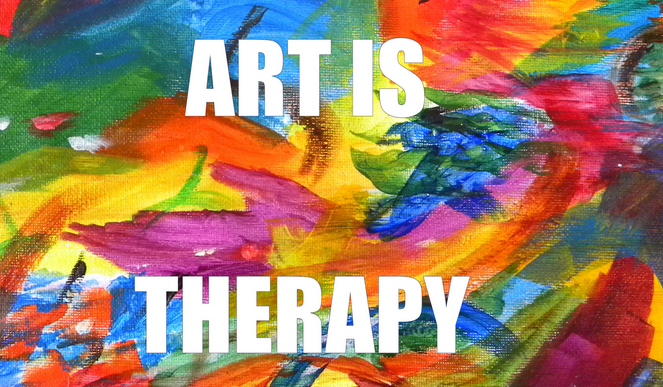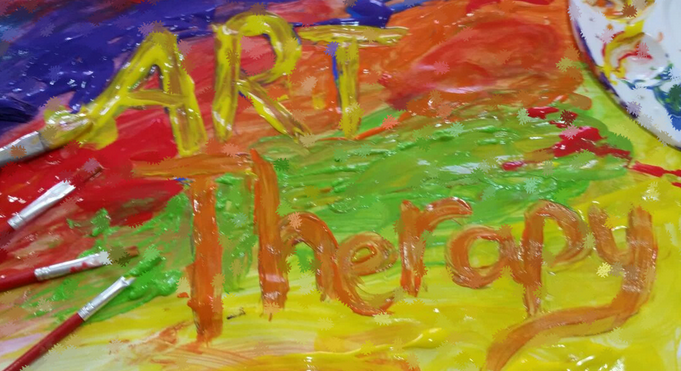|
Getting your Trinity Audio player ready...
|
In today’s fast-paced world, people are constantly seeking ways to de-stress and find solace in their busy lives. One such avenue is through painting, which has emerged as a powerful therapeutic outlet. This article explores the benefits of using painting as a means to alleviate stress, foster mindfulness, and promote emotional well-being.

The Therapeutic Power of Painting
Incorporating Art into Healing
Painting, a form of art therapy, can be a transformative experience for individuals seeking solace in creative expression. It has the remarkable ability to tap into emotions, offering an avenue for catharsis and self-discovery. Therapists have long recognized the potential of art to aid in healing.
Stress Reduction Through Art
Engaging in the act of painting allows individuals to focus their minds on the present moment, temporarily shedding the weight of life’s worries.
Exploring the Mindfulness Aspect
Mindful Brushstrokes
Mindfulness is a practice that encourages individuals to be fully present in the moment, free from judgment. Painting provides an ideal platform for cultivating mindfulness. As the brush meets the canvas, every stroke becomes a mindful act, enabling the artist to immerse themselves in the creative process.
Colouring Your Emotions
Colour selection in painting is a powerful tool for exploring and expressing emotions. Artists often choose colours intuitively, reflecting their current emotional state. The act of blending colours and observing their interplay can be a meditative experience, helping individuals connect with their inner feelings.
Emotional Release and Self-Expression
Unspoken Words on Canvas
For many, articulating their feelings verbally can be challenging. Painting serves as a silent language that allows individuals to convey their emotions and experiences without uttering a word. It becomes a visual diary, where each stroke and hue symbolizes a facet of their inner world.
Empowerment Through Expression
Artistic expression provides individuals with a sense of agency over their emotions. It empowers them to channel their feelings into a tangible form, making the intangible suddenly visible. This newfound clarity can be a source of emotional relief.
Painting for Healing and Growth
Healing Trauma Through Art
Art therapy is a recognized method for healing trauma. For those who have experienced deeply distressing events, painting offers a non-threatening way to process their experiences and gradually heal emotional wounds.
Personal Growth and Self-Discovery
Through painting, individuals embark on a journey of self-discovery. As they experiment with various styles and subjects, they gain insights into their preferences, fears, and aspirations. This process of self-exploration fosters personal growth and resilience.
Creating an Artistic Sanctuary
Setting the Scene for Creativity
To fully immerse themselves in the benefits of painting, individuals often create a dedicated space for their artistic endeavours. This space, whether a corner of a room or an entire studio, becomes a sanctuary for creative expression.
Art Supplies as Tools of Healing
The choice of art supplies plays a vital role in the painting process. High-quality paints, brushes, and canvases enhance the artistic experience, allowing individuals to fully engage with their creative instincts.
Painting and Mindful Meditation
Meditative Brushwork
Many artists describe their creative process as a form of meditation.
The Flow State
Psychologist Mihaly Csikszentmihalyi coined the term “flow” to describe a mental state characterized by deep focus. Engaging in painting often induces this flow state, where artists lose themselves in the act of creation, transcending the boundaries of time and self.
Using Painting as a Therapeutic Outlet: Practical Tips
1. Start with an Open Mind: Approach painting with a spirit of exploration. There are no rules or judgments in the realm of art therapy.
2. Choose Your Medium: Experiment with different painting mediums such as watercolors, acrylics, or oils to discover which resonates with you the most.
3. Create a Comfortable Space: Designate a space where you can paint comfortably. Surround yourself with artwork or objects.
4. Find Guidance: Consider attending art therapy sessions with experienced art therapists who can help you navigate your emotional landscape through painting.
Conclusion
Painting as a therapeutic outlet offers a canvas for healing, growth, and self-expression. It invites individuals to embark on a journey of mindfulness, and emotional release. As the therapeutic benefits of art continue to gain recognition, painting stands.
You may find this information useful:

